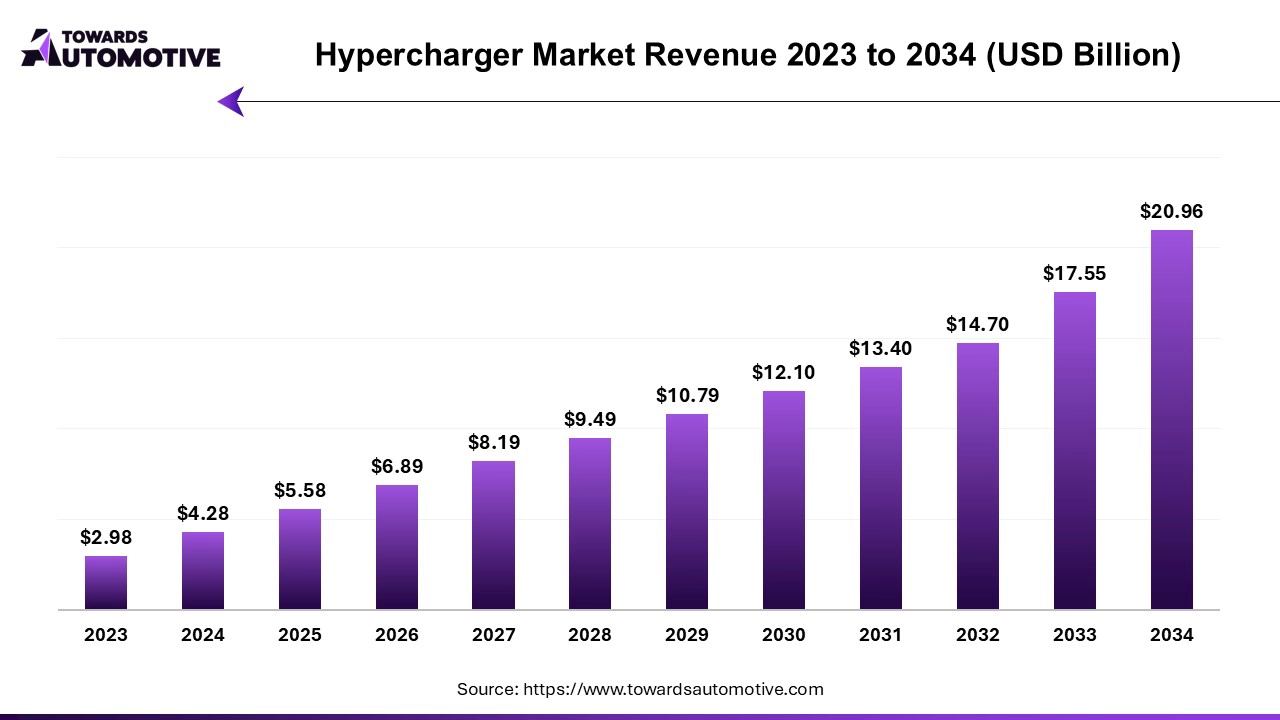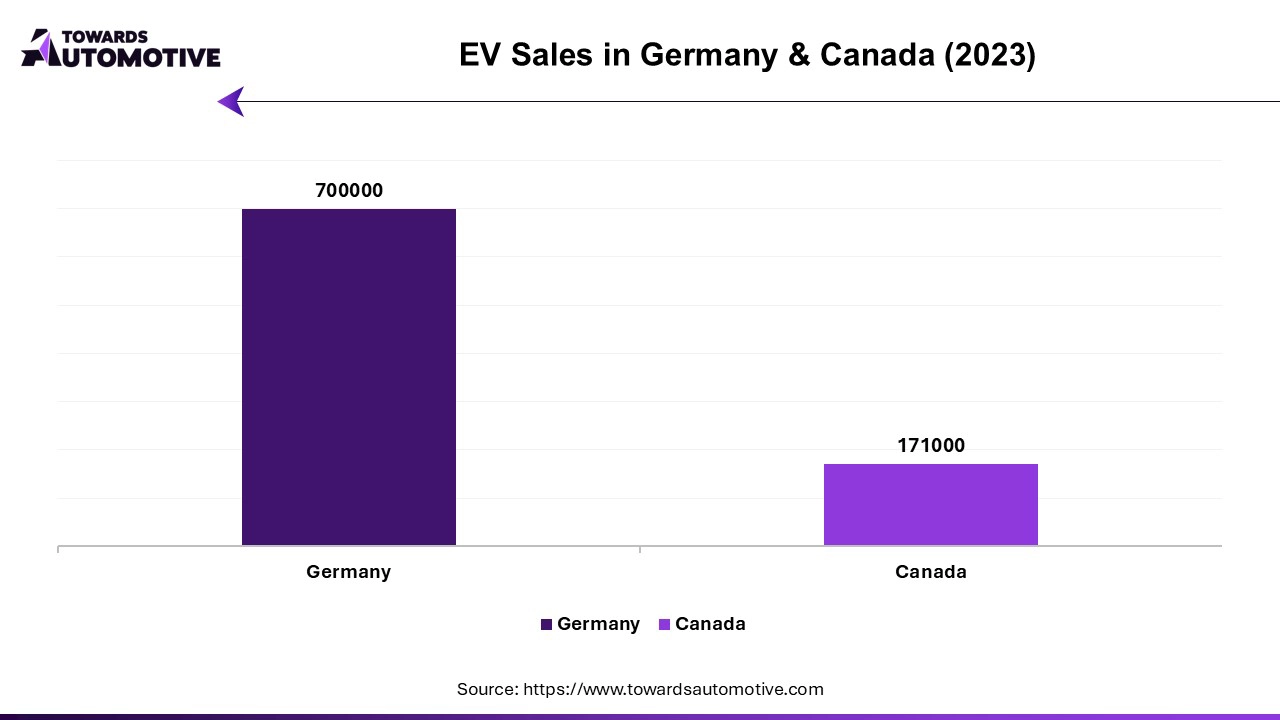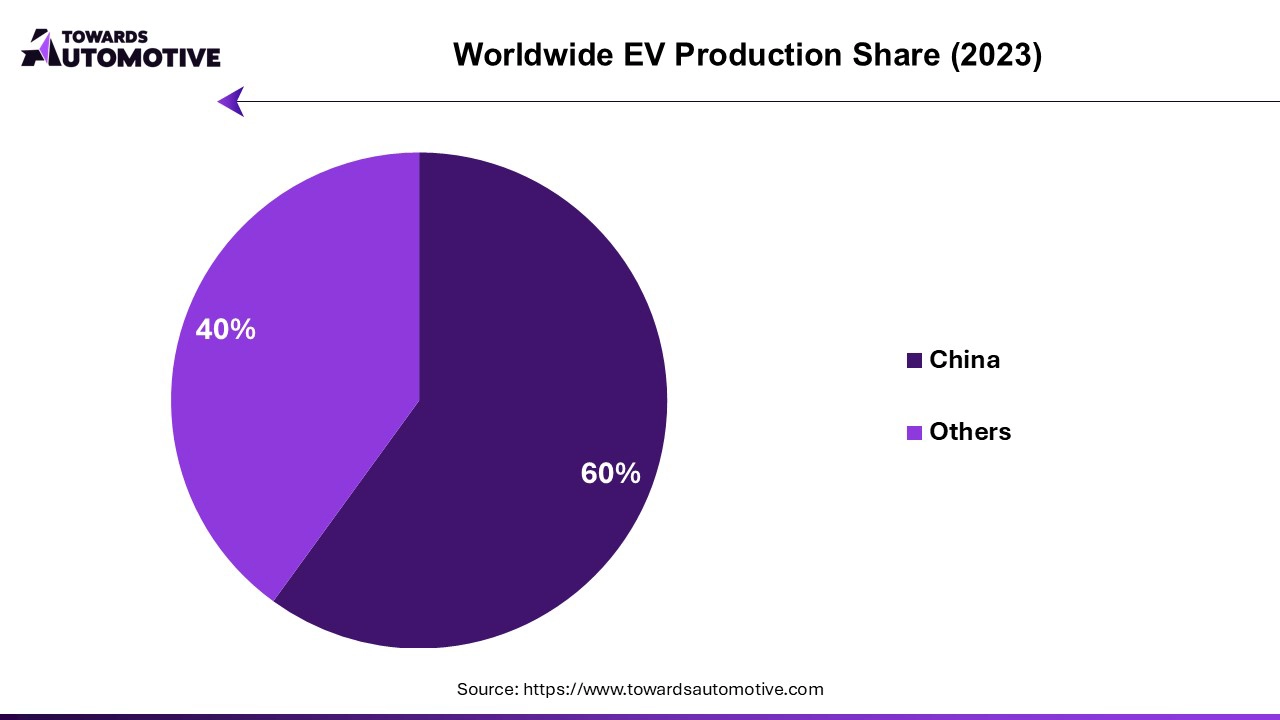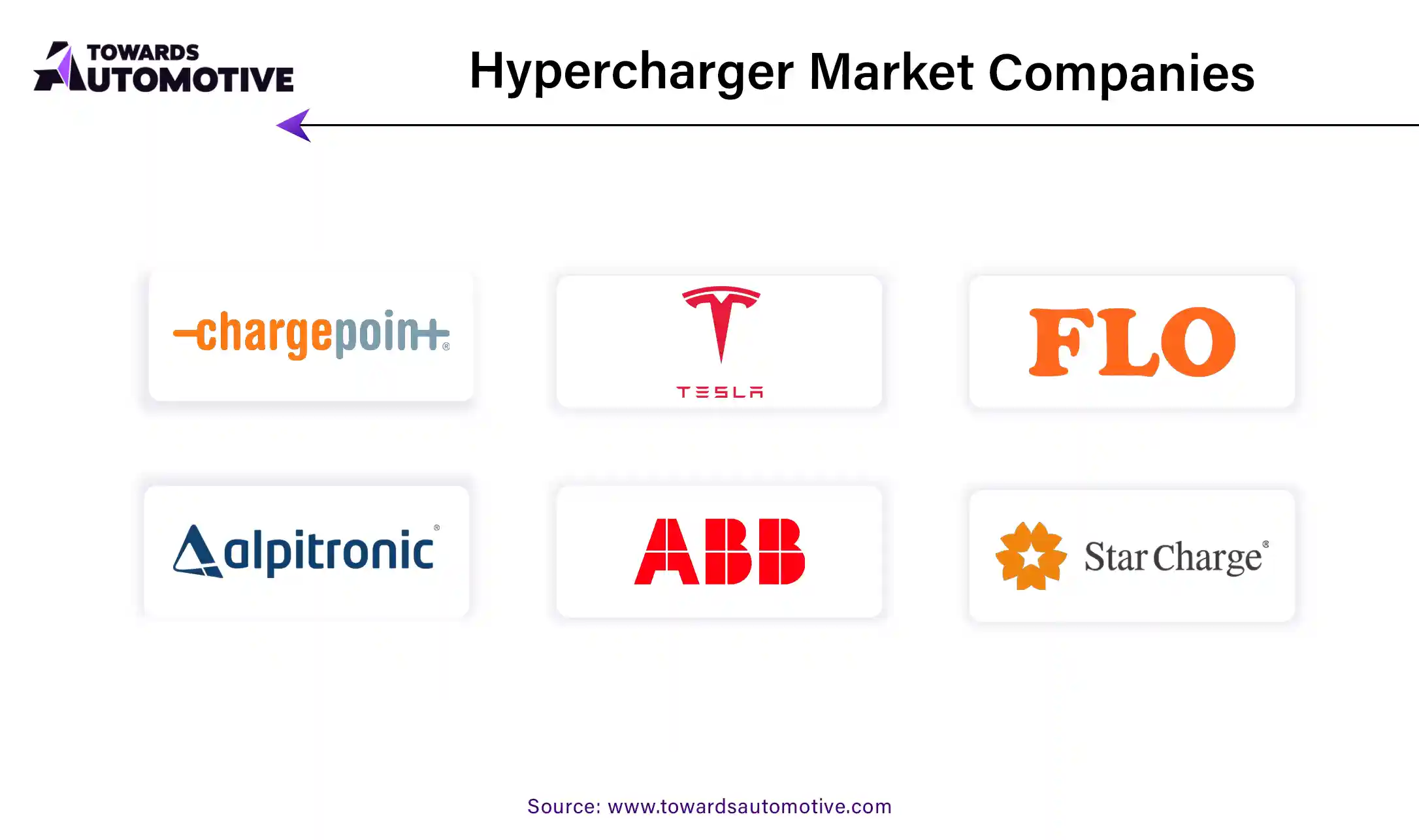April 2025
The hypercharger market is projected to reach USD 20.96 billion by 2034, growing from USD 5.58 billion in 2025, at a CAGR of 19.40% during the forecast period from 2025 to 2034.

Unlock Infinite Advantages: Subscribe to Annual Membership
The hypercharger market is rapidly expanding as demand for ultra-fast electric vehicle (EV) charging solutions continues to rise. Hyperchargers are advanced charging stations capable of delivering significantly higher power outputs, typically ranging from 150 kW to 350 kW or more, enabling EVs to charge much faster than conventional chargers. This rapid charging capability addresses one of the key challenges in EV adoption—range anxiety—by drastically reducing the time required to recharge an EV, making long-distance travel more convenient for EV owners.
The growth of the hypercharger market is being driven by the increasing adoption of electric vehicles, the expansion of EV infrastructure, and supportive government policies aimed at reducing carbon emissions. Key players in the automotive and energy sectors are investing heavily in hypercharger technology to cater to the rising demand for fast charging solutions. Additionally, the integration of smart technologies, such as AI and IoT, into hyperchargers is enhancing their efficiency, allowing real-time monitoring and management of charging stations, which improves user experience.
As more EVs with larger battery capacities enter the market, the need for hyperchargers will continue to grow, positioning the hypercharger market as a crucial component in the transition to a sustainable, electrified transportation ecosystem.
AI is playing a transformative role in the hypercharger market by enhancing the efficiency, reliability, and user experience of ultra-fast charging stations. One of the key contributions of AI is in optimizing energy management and distribution, which ensures that hyperchargers deliver the right amount of power to vehicles without overloading the grid. AI algorithms can analyze real-time data from the charging network, including energy demand, grid capacity, and charging patterns, to optimize the power flow and reduce energy waste. This makes the entire system more sustainable and cost-effective.
AI is also improving the user experience through predictive maintenance and diagnostics. By continuously monitoring the health of hypercharger components, AI can detect potential issues before they result in downtime or equipment failure. This leads to increased uptime for charging stations and minimizes inconvenience for EV users. Additionally, AI-powered hyperchargers can provide personalized charging experiences by adjusting charging speeds based on the vehicle’s battery status and the driver’s preferences.
Moreover, AI enhances the integration of hyperchargers with smart grids, allowing for better load balancing during peak demand periods. This capability ensures that hyperchargers are always operating at optimal capacity, contributing to the wider adoption of electric vehicles by addressing infrastructure limitations.
The growing sales of electric vehicles (EVs) are significantly driving the growth of the hypercharger market, as the demand for faster and more efficient charging solutions increases. With more consumers and businesses transitioning to EVs, the need to overcome challenges like long charging times and range anxiety becomes critical. Hyperchargers, which offer ultra-fast charging capabilities with outputs of 150 kW to 350 kW or more, address this issue by drastically reducing charging times, making EVs more practical for long-distance travel and daily commutes.
As the EV market expands, automakers are producing vehicles with larger battery capacities, which further drives the demand for high-power charging infrastructure. Hyperchargers are essential to meeting the needs of these new-generation EVs, which require faster charging solutions to minimize downtime. Additionally, the growing adoption of EVs for commercial purposes, such as electric fleets and delivery vehicles, is increasing the need for hyperchargers to keep these vehicles operational with minimal charging interruptions.
Furthermore, government policies promoting EV adoption, coupled with investments in charging infrastructure, are fueling the installation of hyperchargers in public areas, highways, and commercial hubs. The synergy between rising EV sales and the expansion of hypercharger networks is accelerating the growth of the hypercharger market, positioning it as a key enabler of the electric vehicle ecosystem.

The hypercharger market faces several restraints, primarily related to high installation costs and infrastructure challenges. Setting up hyperchargers requires significant investment in both hardware and electrical grid upgrades to handle the high-power demands, which can be a barrier for widespread deployment, especially in rural or less developed areas. Additionally, the limited availability of compatible EVs that can fully utilize hyperchargers reduces their immediate market potential. Energy grid capacity and stability are also concerns, as the surge in demand for hyperchargers could strain existing infrastructure, leading to potential inefficiencies and slower growth.
Vehicle-to-grid (V2G) technology is creating substantial opportunities in the hypercharger market by facilitating bidirectional energy exchange between electric vehicles (EVs) and the power grid. This innovative approach allows EVs not only to draw power for charging but also to send excess energy back to the grid, effectively turning vehicles into mobile energy resources. The integration of V2G capabilities with hyperchargers can enhance grid stability and efficiency, especially during peak demand periods when electricity is most needed.
For the hypercharger market, the emergence of V2G systems presents a range of growth opportunities. Hyperchargers equipped with V2G technology can alleviate strain on the grid by utilizing stored energy in EVs to balance supply and demand, thereby reducing the need for additional power generation and enhancing overall energy resilience. Moreover, this technology creates potential revenue streams for EV owners, who can earn compensation for the energy they provide back to the grid, incentivizing further adoption of both EVs and hyperchargers.
As governments and energy providers increasingly focus on sustainable energy solutions, V2G-equipped hyperchargers align with these goals by promoting renewable energy integration. This alignment fosters collaboration between automakers, energy providers, and charging infrastructure developers, paving the way for a more robust and interconnected energy ecosystem, and ultimately driving significant growth in the hypercharger market.
The passenger cars segment held the largest share of the market. Passenger cars are a significant driver of growth in the hypercharger market, as the increasing adoption of electric vehicles (EVs) among everyday consumers creates a rising demand for faster, more efficient charging solutions. As more automakers transition their fleets to electric models, including compact cars, sedans, and SUVs, the need for advanced charging infrastructure, like hyperchargers, becomes crucial. Hyperchargers, offering ultra-fast charging times, cater directly to the convenience that modern consumers expect, allowing passenger EVs to recharge in a matter of minutes rather than hours.
This demand is further fueled by government incentives and stricter emissions regulations encouraging the shift to EVs. As more consumers adopt passenger EVs, especially in urban areas, the need for public charging stations equipped with hyperchargers grows. Additionally, the rise of long-range EVs requires high-power chargers that can support larger batteries, creating further opportunities in the hypercharger market.
Moreover, the passenger car segment is instrumental in driving the expansion of the hypercharger network along highways and in densely populated cities, facilitating long-distance travel and everyday commuting. This expanding infrastructure supports increased EV sales, thereby creating a symbiotic relationship between passenger EV adoption and the hypercharger market’s growth.
The 50-150 kW segment led the industry. The 50-150 kW segment plays a crucial role in driving the growth of the hypercharger market by offering a balanced solution between ultra-fast charging and cost-efficiency. This power range is especially appealing for commercial and public charging stations as it provides a significant improvement in charging speed over traditional lower-powered chargers, without the high costs associated with the most powerful units, like 350 kW hyperchargers. For many electric vehicles (EVs), particularly in the passenger car segment, a 50-150 kW charger can add substantial range in a short amount of time, making it ideal for daily commuters and long-distance travelers alike.
As EV adoption increases, particularly in urban centers and along highways, the 50-150 kW segment is seen as a versatile and scalable option for expanding the charging network. This power range is sufficient to support a broad range of EVs, from compact passenger cars to larger electric SUVs, which have growing popularity. Additionally, businesses and retail locations are increasingly installing chargers in this power range to attract EV drivers, further contributing to market growth.
The widespread deployment of 50-150 kW hyperchargers helps accelerate the transition to electric mobility by addressing range anxiety, ensuring that drivers can charge their vehicles quickly and conveniently. This segment's ability to balance performance and cost is a key factor in driving the hypercharger market forward.
The urban segment held a dominant share of the market. The urban segment is a major driver of growth in the hypercharger market as cities are at the forefront of electric vehicle (EV) adoption and charging infrastructure development. With increasing population density and rising concerns about air quality and carbon emissions, urban areas are rapidly shifting toward sustainable transportation options like EVs. This shift creates a significant demand for efficient and fast charging solutions that can cater to the high volume of vehicles in cities, where parking and charging time are limited.
Hyperchargers, capable of delivering ultra-fast charging in minutes, are particularly suited to urban environments where drivers seek convenience and speed. Public charging stations in city centers, commercial hubs, and residential areas are deploying hyperchargers to accommodate the growing number of EVs on the road. This not only facilitates day-to-day commuting for EV owners but also helps reduce range anxiety, encouraging further adoption of electric vehicles.
Additionally, urban planning initiatives focused on reducing congestion and promoting green mobility solutions are aligning with the expansion of hypercharger networks. City governments and private companies are investing heavily in charging infrastructure, making hyperchargers a key component of urban transportation ecosystems. As cities continue to grow and electrify their vehicle fleets, the urban segment will drive the continued expansion of the hypercharger market.

Asia Pacific dominated the hypercharger market. The hypercharger market in APAC is driven by the rising adoption of electric vehicles (EVs), technological advancements, and significant government support and infrastructure investments. As countries like China, Japan, and South Korea push toward reducing emissions and increasing the use of clean energy, EV adoption is rapidly growing. With this growth, the need for faster and more efficient charging solutions has become critical, leading to increased demand for hyperchargers. These chargers offer ultra-fast charging times, making them ideal for the expanding number of EVs in the region.
Technological advancements in battery and charging technology are also driving the growth of the hypercharger market. Continuous innovations are making hyperchargers more efficient, compact, and capable of delivering higher power outputs. This is crucial for meeting the growing energy demands of modern electric vehicles, which require faster charging to accommodate users’ expectations for convenience and long-range travel.
Additionally, government initiatives across APAC are promoting EV adoption by providing subsidies, tax incentives, and support for building charging infrastructure. Countries like China have set ambitious targets for EV adoption and infrastructure development, accelerating the rollout of hyperchargers in both urban and rural areas. This combined support is laying the groundwork for the rapid expansion of the hypercharger market across APAC.

Europe is expected to grow with the highest CAGR during the forecast period. The growth of the hypercharger market in Europe is driven by strong EV market growth, increasing private sector involvement, and stringent emission regulations. Europe is witnessing rapid growth in the electric vehicle (EV) market as consumers shift towards more sustainable transportation options, spurred by heightened environmental awareness and favorable government policies. This surge in EV sales has fueled the demand for hyperchargers, which provide ultra-fast charging solutions, essential for supporting the growing number of electric cars on the road.
Private sector involvement is also playing a significant role in the expansion of the hypercharger market. Companies across the automotive, energy, and technology sectors are investing in developing hypercharging infrastructure to cater to the rising number of EVs. Major players like Tesla, Ionity, and other private firms are working to install hypercharging stations across Europe to reduce charging times and improve convenience for EV owners.
Additionally, stringent emission regulations implemented by the European Union and individual countries are accelerating the transition to electric mobility. With regulations pushing for reduced carbon emissions and bans on internal combustion engine vehicles in the future, the demand for EVs is soaring, directly boosting the need for robust hypercharging infrastructure to support this shift. This regulatory push is key to driving the long-term growth of the hypercharger market in Europe.
In September 2023, Fastned announced to install a 400 kilo-watt hypercharger in Hilden, Germany. This new charger is designed for EV consumers across the European region.

By Vehicle Type
By Connector Type
By Charging Location
By End-Use
By Region
April 2025
April 2025
April 2025
April 2025
We offer automotive expertise for market projections and customizable research, adaptable to diverse strategic approaches.
Contact Us